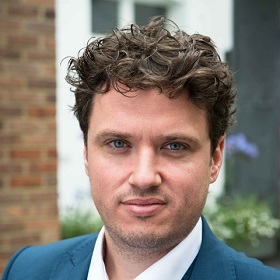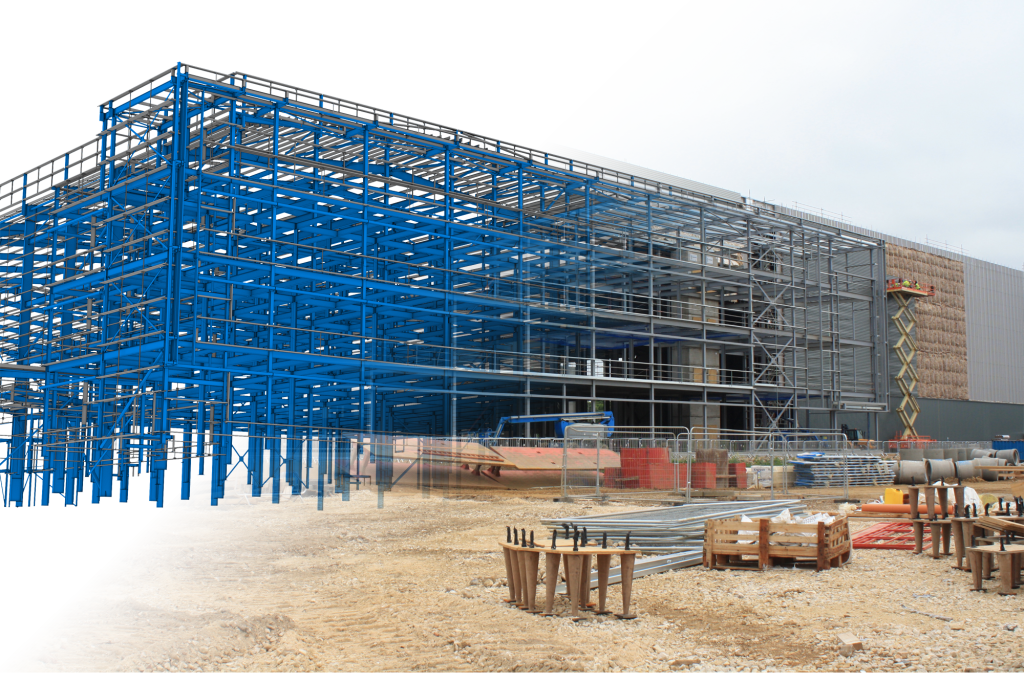BIM and CDM - Interview with Stefan Mordue
Stefan Mordue is a chartered architect, construction project manager, writer and NBS consultant. He is co-author of a number of publications, including ‘BIM for Construction Health & Safety’ and ‘BIM for Dummies’, and was part of the team that delivered a joint project for NBS and UK BIM Task Group to produce a BIM toolkit in preparation for the government’s BIM mandate.
Stefan is a visiting lecturer at Heriot-Watt University in Edinburgh, and he sits on a number of industry and technical standard committees, including the British Standards Institute Occupational Health & Safety Management and the Architects Council of Europe BIM working group. He was a founding member of the CIC BIM 2050 group.
|
Callsafe: How can BIM benefit those responsible for health and safety risk management? |
Stefan Mordue (SM):
Everybody has something to gain, from the client to the end user – everybody can benefit from the introduction of health and safety information into BIM. Just simply by having data that’s readily available, consistent, structured and in an open format makes easier to read, digest and interrupt.
When it comes to health and safety, it’s really about getting critical information to people when they need it and at the right time. While health and safety should be an on-going concern for a whole project timeline, what BIM can allow us to do is have an earlier consideration of hazards and risks within the design as we are sharing and coordinating information within the project team. It can benefit from such things as construction sequencing and virtual reality simulations – these processes are about constructing in a safe virtual environment without anybody getting hurt right through to the construction phase.
We can use BIM for training, hazard detection, etc. but while techniques such as 4D sequencing and simulations are useful tools within health and safety, we can use less technically advanced methods. They can be just as powerful and simply by showing information in a graphical way so all can understand it. Just recording hazards or decisions on risk in a structured way using an open format such as COBie is again very powerful.
|
Callsafe: Do you think that there is enough awareness amongst those responsible for health and safety risk management of the advantages of BIM? |
SM:
I would say it’s increasing. If we went back to the 2011 Government Construction Strategy, health and safety wasn’t mentioned at all. It was mentioned, however, as a key driver within the Construction 2020 - 2025 Strategy. This acknowledged health and safety would play a vital component in a roadmap to success.
It’s extremely positive to see health and safety coming into these larger strategies and we are now realising that to have a construction industry we can all be proud of, we need to bring younger people through and we are only going to do that by having a safe industry.
Contractors, particularly the large tier 1 contractors, have been using BIM for health and safety management for quite some time now but we need to start to use it as an early intervention. The best form of any prevention is at the pre-construction stages.
|
Callsafe: Is there an obvious link up between BIM and CDM 2015 Regulations? |
SM:
There are many synergies there. It’s all about managing information and making it readily available to people so the can use it effectively.
A lot the benefits of BIM are discussed in terms of monetary value or cost savings, efficiency gains but there are real opportunities for health and safety management to be incorporated into that BIM process.
It doesn’t really have to be a really high tech solution; something simple about collating relevant and crucial information in a very simple and graphical way that then can be communicated to the relevant people is really powerful, particularly when you consider some of the unfortunate injuries and fatalities that have happened in recent times, sometimes come down to a language barrier. So often having information is readily available and easy to understand can be a very powerful tool when it comes to health and safety.
When we consider how important the construction industry is to the UK economy and we look at some of the facts and figures around the industry, although it is improving it is still quite a dangerous industry to work in. Given the fact that it is so vital for our economy, we really need to start to think how we can make the industry safer and how we can produce safer assets. Only by doing this can we make an industry that the next generation of professionals can be really proud of and one that they want to work in.
|
Callsafe: With the new CDM 2015 Regulations now in force and the creation of new role of the Principal Designer and all of its responsibilities, presumably BIM will have a vital role to play? |
SM:
Yes it will. People are certainly using BIM during the construction phases but with any safety intervention the best form is do it before you even put a spade in a ground. It needs people to start thinking about these things a lot earlier; we need to start embedding this within the design chain.
The change in the CDM 2015 regulations with the introduction of the Principal Designer is really promising because that role is best placed and has the most influence to design out and coordinate health and safety information at the pre-construction stage.
|
Callsafe: How could a resource like Construction Operation Building information exchange (COBie) be used in relation to health and safety? |
SM:
COBie is simply a model view of the Industry Foundation Classes (IFC) schema. The idea is that it is used to improve processes of how we collect BIM information and how we handle that information and share it with asset owners, occupiers or operators, helping them to manage their asset more effectively. COBie isn’t asking for any more information than we currently deliver but what it is asking for is it in a structured way.
It’s interesting if you look at the BIMtask group website, it originally describes COBie as being a means of sharing structured information just like CDM and BIM.
COBie has an issues column, which is quite useful as it provides the designer with the opportunity to record information such as risk ratings or CHARM (Chemical Hazard and Risk Management). This is all structured and can be shared within the design team.
Other simple approaches include recording risks in other open standards. The IFC4 has a property set called P Set Risk so you can start to highlight information or tag BIM objects and communicate information in a very simple way – for example through a colour-coded system. Some of the non-graphical information and attributes can then be scheduled and risks and hazard can be easily located.
|
Callsafe: Can a digital model of a building still be useful in terms of managing health and safety even after the physical construction is complete? |
SM:
One of the real value propositions of BIM is as well as procuring a physical asset; you also procure a digital one. Throughout the process you are getting this digital creation as a byproduct but that digital model has the power to become the basis of many things going forward.
It can help inform training or simulation and post construction can be used to plan or execute safe methods of operation and maintenance. It becomes a really powerful weapon in the arsenal of the building owner.
|
Callsafe: How do you see the role of BIM developing in the future with regards to health and safety? |
SM:
That will be interesting. There have been lots of attempts to try and automate the processes such as regulation and legislation over the years. Sometimes that’s quite difficult because a lot of them aren’t black and white so it still needs a lot of human participation to understand some of this information.
What we’ll see is BIM will start to develop so that we have information close to hand to allow us to make informed decisions. We’ll also see emerging technologies such as the immersive technologies coming from the gaming industry. This will give the ability to put yourself in a situation and really start to understand your surroundings and maybe some of the impacts that your decisions may have on health and safety.
|
Callsafe: Do you expect the private sector to play a more significant part in the uptake of BIM? |
SM:
We are seeing a lot of the private sector using BIM. I believe a lot of that will be dependent on the client. It will most likely be down to the private sector and construction professionals advising the client of the advantages of BIM.
Hopefully we will see the private sector using it because it is a better way of working – it’s more efficient and you get a better performing asset at the end of the day.
|
Callsafe: Is it fair to say that BIM is as much about changing people’s outlook/behaviour as it is about new technology? |
SM:
It is and in my personal opinion there’s not enough emphasis or guidance given in this area. BIM is very much about a behavioural change programme than it is about technology or process change debate. It’s going to require changes to policy and how we use technology and devices.
For example, how we use our mobile devices on construction sites and file-sharing sites such as Youtube, which have historically been used for viewing music videos and the like; we need to think about these resources in a different way. Social media is another example and unlocking its power to get access to a whole online community of like-minded people where you can share, exchange and collaborate ideas.
This article was originally published as part of Callsafe's 'CDM2015 & BIM Synergy' publication.
[edit] Find out more
[edit] Related articles on Designing Buildings Wiki
Featured articles and news
Infrastructure that connect the physical and digital domains.
Harnessing robotics and AI in challenging environments
The key to nuclear decommissioning and fusion engineering.
BSRIA announces Lisa Ashworth as new CEO
Tasked with furthering BSRIA’s impressive growth ambitions.
Public buildings get half a million energy efficiency boost
£557 million to switch to cleaner heating and save on energy.
CIOB launches pre-election manifesto
Outlining potential future policies for the next government.
Grenfell Tower Inquiry announcement
Phase 2 hearings come to a close and the final report due in September.
Progress from Parts L, F and O: A whitepaper, one year on.
A replicated study to understand the opinion of practitioners.
ECA announces new president 2024
Electrical engineer and business leader Stuart Smith.
A distinct type of countryside that should be celebrated.
Should Part O be extended to existing buildings?
EAC brands heatwave adaptation a missed opportunity.
Definition of Statutory in workplace and facilities management
Established by IWFM, BESA, CIBSE and BSRIA.
Tackling the transition from traditional heating systems
59% lack the necessary information and confidence to switch.
The general election and the construction industry
As PM, Rishi Sunak announces July 4 date for an election.
Eco apprenticeships continue help grow green workforce
A year after being recognised at the King's coronation.
Permitted development rights for agricultural buildings
The changes coming into effect as of May 21, 2024.
























